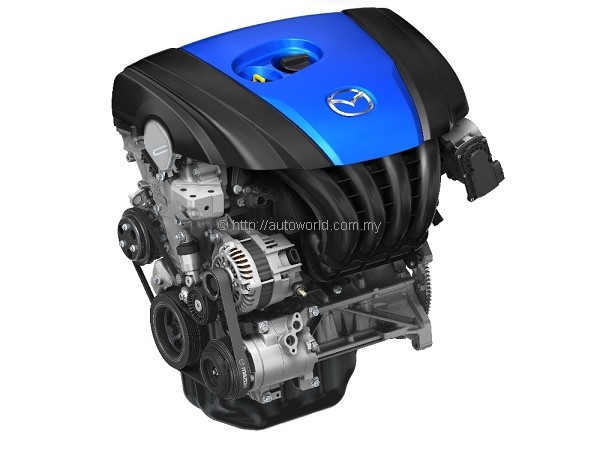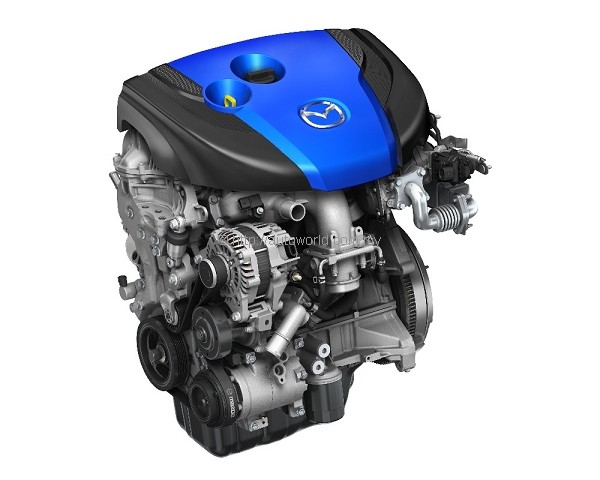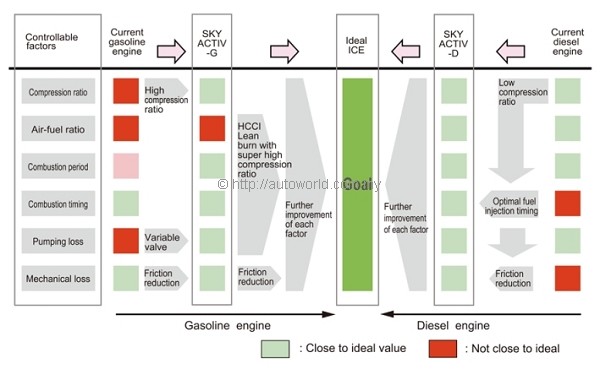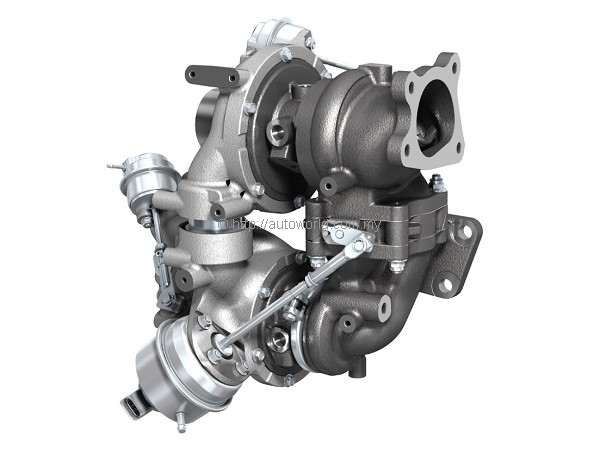SKYACTIV – Mazda’s Internal Combustion Engine Initiatives
Highly Efficient Engines Developed in pursuit of Ideal Combustion.
Concerns about environmental issues related to fossil fuels and the fact that they are a depleting resource has prompted continual research to find a more efficient engine. Considering that close to 80 percent of all fuels in internal combustion engines are spat out as un-burnt gases through the exhaust, it stands to reason that there is room for improvement, although after more than a century in development, it is difficult to imagine that any stone has been left unturned.
Another fact of life is that a substantial amount of energy is also lost during the transfer from the flywheel to the wheels through the drive train, which includes the clutch, transmission, and drive shafts.
Many of today’s automakers are working on engine refinements by making engines smaller and car lighter so as to offer better fuel efficiency. The European makers are moving in the direction of super-charging and turbo-charging, or using a combination of both. The premise is that by increasing the amount of air in the cylinder through forced induction, the fuel that has been injected into the cylinder would burn better, and as such we see cars from Volkswagen, Mercedes-Benz and BMW heading in this direction. Volkswagen seem to be the leader in this field, and the latest influx of 1.2 litre and 1.4 litre engines in the Polo, Golf and Scirocco models is making a great impact upon the market.
It will be a matter of time before brands like Volvo and others follow suit – we will see 2.0 litre sized cars being fitted with 1.4 litre to 1.6 litre engines developing the same horsepower as bigger capacity engines, yet offering better fuel economy. Cars will be getting lighter and lighter, and more energy-saving devices and friction reducing materials will be employed.
Mazda is taking a slightly different approach in terms of engine development. One of its recent developments towards and ideal engine configuration is the Homogenous Charge Compression Ignition (HCCI) engine, which offers the combined advantage of both gasoline and diesel engines.
The Mazda HCCI engine adopts a compression ratio of 14:1, in both the gasoline and diesel categories. Thanks to a number of technological breakthroughs, Mazda claims it has succeeded in dramatically improving fuel efficiency, power, exhaust gas emissions and other attributes. With the diesel engine in particular, Mazda has managed to meet stringent exhaust gas emissions regulations without installing expensive after-treatment devices such as urea selective catalytic reduction (SCR) to counteract NOx emissions. As an aside, gasoline engines of today, as we know of them, operate with compression ratios of between 9.5: 1 and 11.5:1, the higher compression engines being offered in high performance cars. Up to now, high compression is associated with detonation – i.e. the fuel starts to combust before the spark has a chance to ignite it, due to the high compression pressure, and can result in heavy damage to the engine. For diesels, the common compression ratio is around 18:1 or higher, as the high compression is required to help to combust the fuel.
Mazda’s move towards a compression ratio of 14:1 for the gasoline engine and diesel engine, therefore, is unprecedented, and if successful, will prompt a total re-think about the internal combustion engine.
Improving Fuel Economy of the Internal Combustion Engine (ICE)
In a common internal combustion engine (ICE)of the total amount of energy released from the combustion of fuel, the majority is wasted as four major losses: exhaust gas, cooling loss, pumping loss, and mechanical loss. Considering that the remaining amount is converted into engine output, improving the thermal efficiency of an ICE is equivalent to reducing these four losses.
The controllable factors in engine development are compression ratio (expansion ratio), air-fuel ratio (specific heat ratio), combustion duration, combustion timing, pumping loss and mechanical friction. Mazda believes that bringing these six factors closer to their ideal states means nothing else but the evolution of the ICE.
Of the above six controllable factors, compression ratio was the key for both the gasoline and diesel engines. Breakthroughs in technology realized a gasoline engine with an exceedingly high compression ratio delivering high fuel economy (comparable to a diesel engine) and greatly improved low and mid-end torque. As for the diesel engine, a significantly low compression ratio resolved issues such as the optimization of fuel injection timing and the substantial loss of mechanical friction, realizing a clean and highly efficient engine. (Fig. 2-3)
The technology used in the SKYACTIV engines are widely applicable; from light fuel-sippers that can rival an HEV (Hybrid Electric Vehicle), to high performance models which also provide satisfying fuel economy.
Evolution of the ICE
Mazda states that the ICE still has much room left for improvement before ideal combustion is attained, and it is said that enhancing its efficiency up to 60 percent is possible. Beyond this technology introduction lies HCCI (homogenous charge compression ignition), spoken of as the new generation combustion method, which enables the simultaneous reduction of NOx and CO2.
By improving the ICE’s efficiency, when it is installed in a HEV, the size of the electric device it’s paired up with can be kept small. This will make it possible to realize an HEV full of the fun-to-drive Mazda DNA.
Mazda2 To be the first Non-hybrid with up to 30 kilometres per litre fuel consumption
At the Mazda Forum held in October in Japan, Mazda announced that the first vehicle to be introduced with the new engine, capable of up to 30 kilometres per litre of petrol, will be the Mazda2, and it will be unleashed in 2011.



























